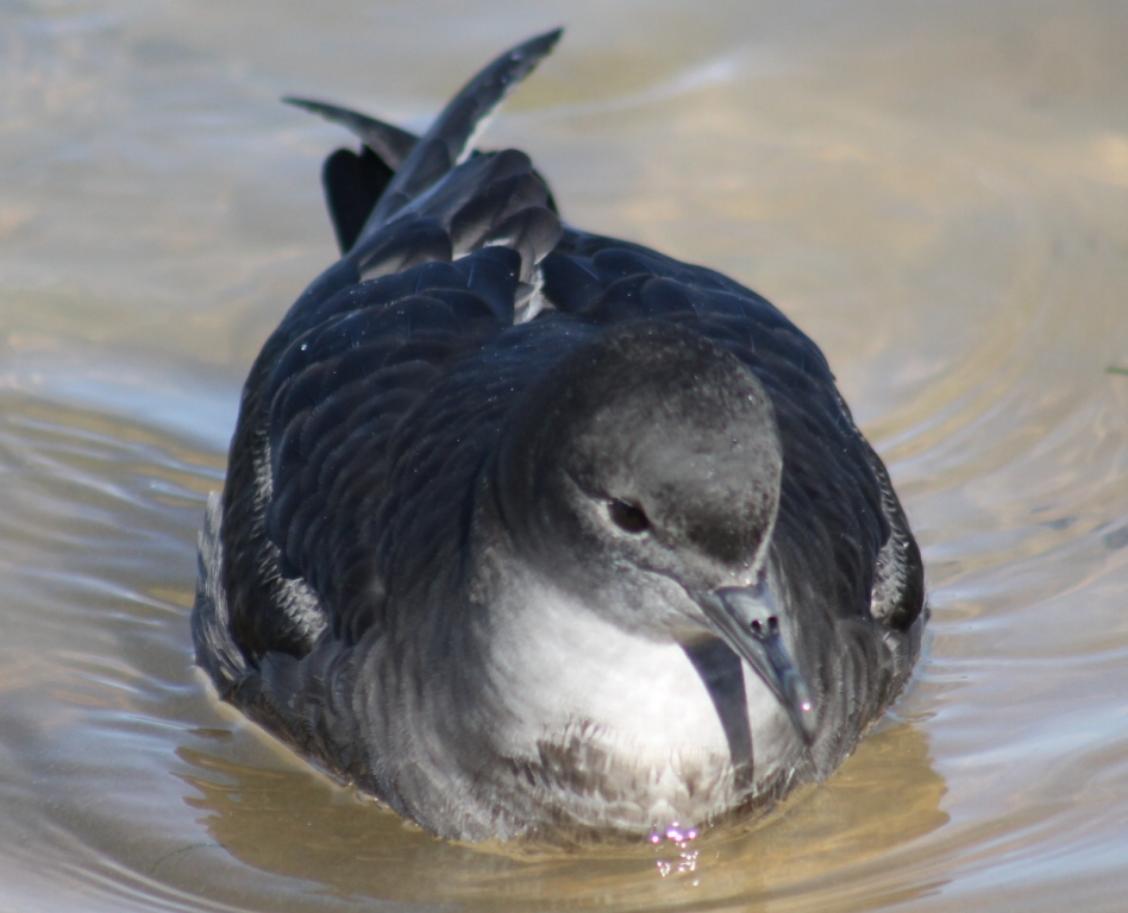Shearwaters washing up on local beaches for third year in a row: Mass mortalities of Starving Birds attributed to Australia's Lose-Lose Policy on the Australian Environment
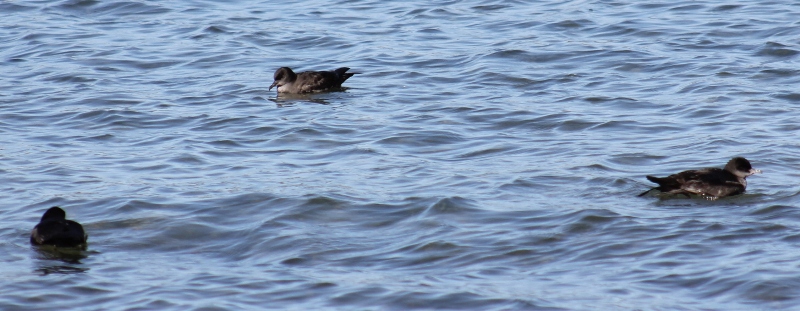
On Sunday October 27 2024 Adrift Lab, which partners with local group Living Ocean, posted via social media;
'We are terribly sorry to be posting this, but we are deeply upset by what we are seeing today, which has been made worse by the response by some members of the community. Today alone, more than 2000 dead seabirds across nearly a dozen beaches spanning ~1000 km have been reported dead to Adrift Lab.
A number of myths are circulating widely on social media at the moment, and addressing such a high level of misinformation will require hard work from us all. We need your help!
Myth #1 – dead birds on beaches is “normal”
Myth #2 – the birds died because they are exhausted (for example, from migration)
Myth #3 – the wind/storm last Thursday (or whenever) killed the birds.
None of these are true. The shearwaters you are seeing dead right now completed their migration to Australia in September, their deaths 6 weeks later have little to do with migration. Seabirds have evolved special adaptations to take advantage of windy conditions, which is why most seabirds breed/live in the roaring 40s and furious 50s. Wind is essential to their way of life.
So why did the birds die? Feedback from the community and wildlife care groups all along the east coast indicate the birds are emaciated – they starved due to a lack of prey. This is not normal, and we should do everything we can NOT to normalise the mass deaths of thousands of long-lived marine animals.'
Shearwaters migrate south from the Bering Strait near Alaska, to their breeding grounds in Victoria and Tasmania during September and October each year. Although they stock up on their food in the northern hemisphere, the seabirds depend on diving into the ocean for to eat as they head south.
Shearwaters feed on krill, squid and fish. However, scientists have released studies examining the impact of pink salmon (Oncorhynchus gorbuscha), on the muttonbirds wreck events.
When wild numbers couldn’t satisfy consumer demand for the salmon, and by the mid-20th century the species was in trouble, to take pressure off wild fish stock and meet soaring demand, salmon hatcheries began to release billions of fry, many more than would exist through nature, into the North Pacific Ocean. Pink salmon numbers. Both hatchery and wild fish, have more than doubled in recent decades.
Initially, increased salmon numbers caused crashes in zooplankton in odd-numbered years, when most pink salmon reach spawning size and are 25 times more abundant than in even-numbered years. The effect is so strong that even healthy breeding muttonbirds arriving in Australia were lighter most odd-numbered years.
Other factors are also affecting them, specifically the changes in zooplankton. The Arctic seas are among the fastest warming on Earth. Marine heatwaves have been causing shifts in where and when zooplankton occur, and how large they grow.
Zooplankton can survive in warm waters, however, they thrive in cooler waters. The east Australian current has also strengthened off the country's southeast in recent years, and led to warmer and less productive waters in the region.
When seabirds on a strict schedule arrive to feed, they can miss the zooplankton buffet. This has led to devastating wrecks for Arctic and sub-Arctic seabird species, including shearwaters.
The result is many are exhausted from the three-week long migration and fail to reach Victoria and Tasmania, and instead end up on local beaches.
Sadly, the event is not an isolated occurrence and in most cases the lack of available food is behind the mass deaths.
In October and November 2000 thousands of birds came ashore from Brisbane to Tasmania and across to New Zealand. The highest number of birds impacted was recorded near South West Rocks north of Port Macquarie, with 1820 birds per kilometre over 4.5 kilometres on 25 October 2000, and the largest mortality of shearwaters along that section of coast for at least ten years.
In 2013, hundreds of starving and already dead shearwaters washed up on local and further away NSW beaches. Necropsies later established they had eaten pumice stones out of desperation for food. Up to 3 million were lost that year.
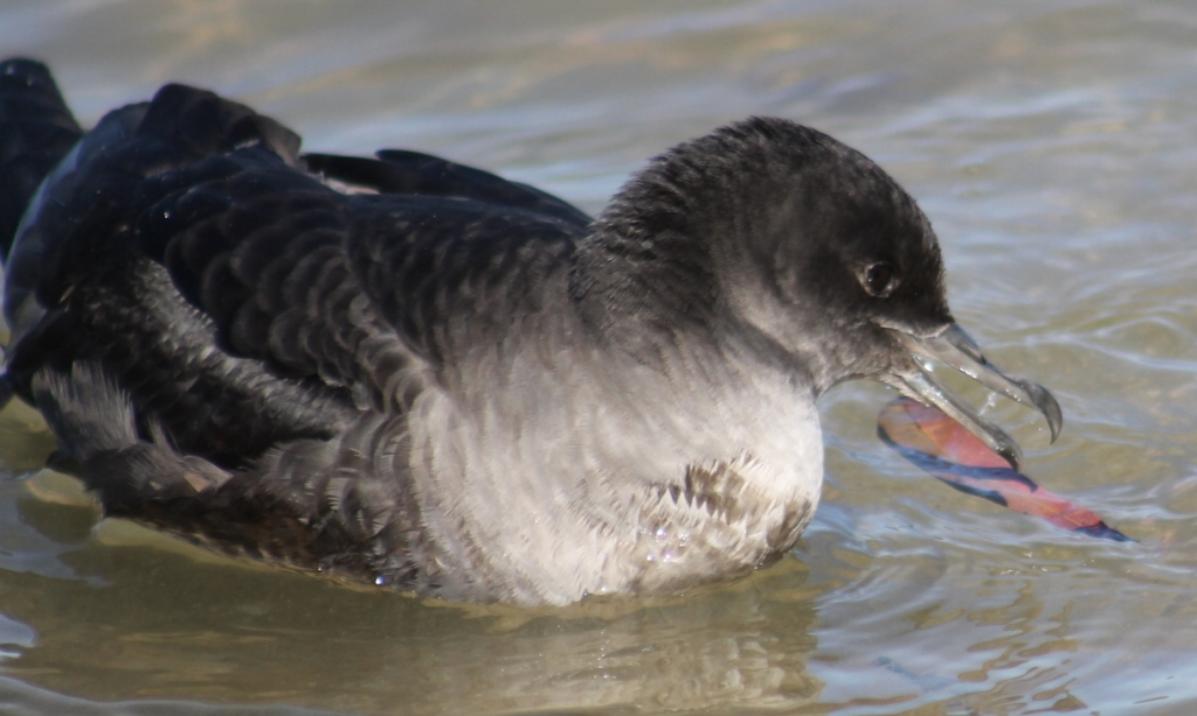
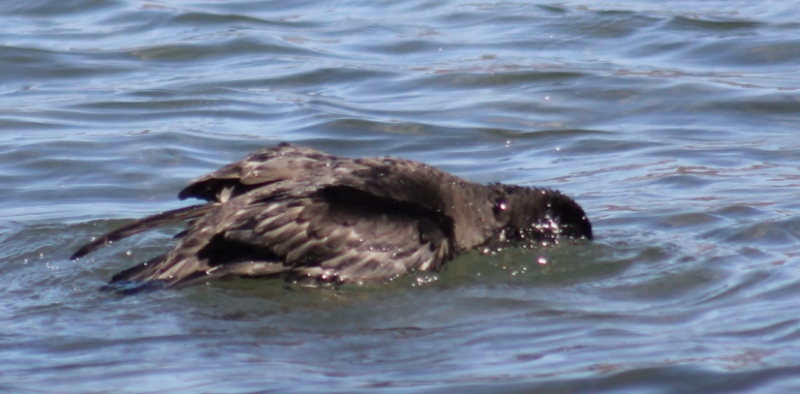
Dipping head into water seeking food
The mass deaths have been occurring almost every year since. Last year thousands died again, the same occurred in 2022.
This year shearwaters have been recorded on beaches from Palm Beach to Freshwater, making this the third year in a row shearwaters are not making it to their breeding grounds.
Adrift Lab reported in February 2024 another wreck event began, this time involving mostly Fairy Prions (a small seabird and with blue-grey feathers) washing up on southern Tasmanian beaches. Fairy prions mainly eat small pelagic crustaceans, along with small fish and squid.
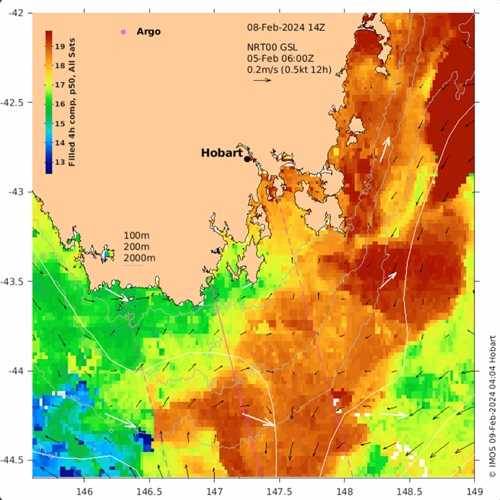
The sea surface temperature (SST) in February 2024, when Fairy Prions began washing up. Image:
On October 31 2024 CSIRO and the Australian Bureau of Meteorology released the State of the Climate Report 2024. Released every two years, the latest edition has found Australia’s weather and climate has continued to change, with an increase in extreme heat events, longer fire seasons, more intense heavy rainfall, and sea level rise.
On land, Australia has warmed by an average of 1.51°C since 1910.
Global CO₂ emissions from fossil fuel use have been increasing since the beginning of the Industrial Revolution, and increased by 1.1% from 2022 to 2023, reaching the highest annual level ever recorded.
The report records the average annual carbon content embedded in Australia’s fossil fuel exports between 2010 and 2019 (1,055 megatonnes) was more than double the average annual national carbon emissions over the same period (455 Mt). However, the emissions of these carbon exports are accounted in the countries where the fossil fuels are used, so Australia is heating up the planet much more than the report can record.
In this lose-lose scenario, and with yet more recent gas and coal mine approvals by Australian governments at state and federal level, gas and coal mining is also destroying the environments and ecosystems it is produced from, along with killing all the species that exist in these former 'homes'. Those environments, at sea and on land, are needed to be kept intact to restore balance.
The State of the Climate Report 2024 demonstrates the importance of maintaining the integrity of our natural land and sea ecosystems. Ecosystems are Australia’s most important carbon sinks, but their effectiveness as sinks depends on factors including the future evolution of the climate and how it will affect our rainfall and wildfire regimes.
Human activities have been the main driver of climate change, primarily due to the burning of fossil fuels like coal, oil and gas.
In relation to the successive years of shearwater and other aquatic birds wreck events, the report records our oceans have heated up by 1.08°C on average since 1900.
Scientists found the oceans around Australia are continuing to warm, with increases in carbon dioxide in the atmosphere leading to more acidic oceans, particularly south of Australia.
Almost all (90%) of the extra heat trapped by greenhouse gases has gone into the oceans. Oceans are getting rapidly hotter. This matters because ocean heat strongly influences weather patterns in Australia.
Australia’s oceans are warming faster than the global average. But the oceans off south-east Australia and the Tasman Sea are a particular hotspot and are now warming at twice the global average.
CSIRO Research Manager, Dr Jaci Brown, said warming of the ocean has contributed to longer and more frequent marine heatwaves, with the highest average sea surface temperature on record occurring in 2022.
"The East Australian Current is shifting further south because of changes to the winds and the winds change because of changes to the surface temperature of the ocean," Dr Brown explains.
"There's these feedbacks between the atmosphere and the ocean as they talk to each other.
"As one thing changes, it changes something in the other one which feeds back to the atmosphere."
“Increases in temperature have contributed to significant impacts on marine habitats, species and ecosystem health, such as the most recent mass coral bleaching event on the Great Barrier Reef this year,” Dr Brown said.
"Rising sea levels around Australia are increasing the risk of inundation and damage to coastal infrastructure and communities.
“Global mean sea level is increasing, having risen by around 22 centimetres since 1900. Half of this rise has occurred since 1970.
“The rates of sea level rise vary across the Australian region, with the largest increases in the north and south-east of the Australian continent.”
The amount of greenhouse gases in the atmosphere continues to increase, contributing to climate change, with 2023 the warmest year on record globally.
Dr Karl Braganza, Climate Services Manager at the Bureau of Meteorology, said Australia is continuing to warm, with eight of the nine warmest years on record occurring since 2013.
“This warming has led to an increase in extreme fire weather, and longer fire seasons across large parts of the country,” Dr Braganza said.
The report describes the shift toward drier conditions between April to October across the southwest and southeast, and reduced rainfall in southwest Australia now seems to be a permanent feature of the climate.
"The lower rainfall in the cooler months is leading to lower average streamflow in those regions, which can impact soil moisture and water storage levels and increase the risk of drought. Droughts this century have been significantly hotter than those in the past," Dr Braganza said.
“However, when heavy rainfall events occur, they are becoming more intense, with an increase of around 10 per cent or more in some regions.
“The largest increases are in the north of the country, with 7 of the 10 wettest wet seasons since 1998 occurring in northern Australia.”
Although Australian emissions have declined since 2005, Australia is projected to see continued warming over the coming decades, with more extremely hot days and fewer extremely cool days.
The rate of emissions decline will need to accelerate from now to meet Australia’s 2030 emissions targets.
State of the Climate 2024 is the eighth report in a series published every two years by CSIRO and the Bureau of Meteorology. The findings highlight the importance of ongoing monitoring and help to inform and manage climate risk.
New data released by the UN on Monday October 28 indicates that greenhouse gases have hit a record high shows once again and that urgent action and not words is needed from the world’s major polluters to protect us all from climate change.
Echoing the UN chief’s longstanding appeals, WMO Deputy Secretary-General Ko Barrett told journalists that carbon dioxide (CO2) – one of the three main greenhouse gases, along with methane and nitrous oxide - is now accumulating in the atmosphere “faster than at any time experienced during human existence”. Because of the extremely long lifetime of CO2 in the atmosphere, “we are committed to rising temperatures for many, many years to come,” she added.
WMO’s 2024 Greenhouse Gas Bulletin offers a stark, scientific reminder that rising CO2 levels need to be slowed. In 2004, the concentration of carbon dioxide in the atmosphere was 377.1 parts per million (ppm), while in 2023, this reached 420 ppm, according to WMO’s Global Atmosphere Watch Network. “This is an increase of 42.9 parts per million, or 11.4 per cent in just 20 years,” Ms. Barrett explained.
“These are more than statistics," the WMO deputy chief insisted. "Every part per million matters, every fraction of a degree of temperature increase matters; it matters in terms of the speed of glacier and ice retreat, the acceleration of sea level rise, ocean heat and acidification. It matters in terms of the number of people who will be exposed to extreme heat every year, the extinction of species, the impact on our ecosystems and economies.”
On Saturday November 1 2024 residents messaged the news service: 'There’s an alarming number of dead birds washed up on our beach today at North Narrabeen,... Turimetta...Warriewood...Avalon .....''
Wildlife volunteers were at Dee Why on Saturday morning, November 1, collecting bodies for testing for N5N1 Avian influenza. Please report any birds to local wildlife groups who will advise the Wildlife disease hotline if samples are required.
On Wednesday October 30 2024; Adrift Lab stated;
''We’re getting reports that include a surprising number of Flesh-footed Shearwaters (recently renamed the Sable Shearwater). This species is not particularly abundant, and already in decline, so it’s important to accurately record them when they die. Photos of the beak and legs are key. Please don’t touch the birds, but do keep a careful eye on their legs - many birds of this species have metal bands attached to their legs. If you find one, it’s important that a photo be taken of the band (both sides) so that we can report it to the ABBBS. Big thanks!
Note: a banded bird was found beach-washed north of Sydney last year, so it’s very possible you may encounter one!'
If you can count them and take photos to send to Adrift Lab that would be invaluable.
Adrift Lab said on November 1, 2024:
'Today has been HARD. Really, really hard. Thank you to everyone who submitted Beached Bird data. Our email inbox and DM’s were absolutely swamped with 100s of photos and notes of sadness.
Thankfully, your notes were also full of determination, and love for the birds and science.
Please keep sending us data and sharing our posts/website across your networks. Our ability to respond quickly may decline if we continue to be inundated, but don’t stop: we’re grateful
As always, a HUGE thanks to our incredible partner, Living Ocean, we couldn’t do this without you!'
SUBMIT YOU DATA HERE: https://adriftlab.org/news/reporting-seabird-mortalities-to-adrift-lab/
Please:
- - Take a photo of the scene and individual bird (photo should include the beak/feet)
- - Record how far you walked (estimates are fine)
- - Note how many people (we need this to calculate search effort)
- - Record the total number of dead/dying birds you observe
How to send photos and data:
- - Email: adriftlab@gmail.com
- - direct message via any of #AdriftLab's social media channels (you can also reply to one of their existing posts)
